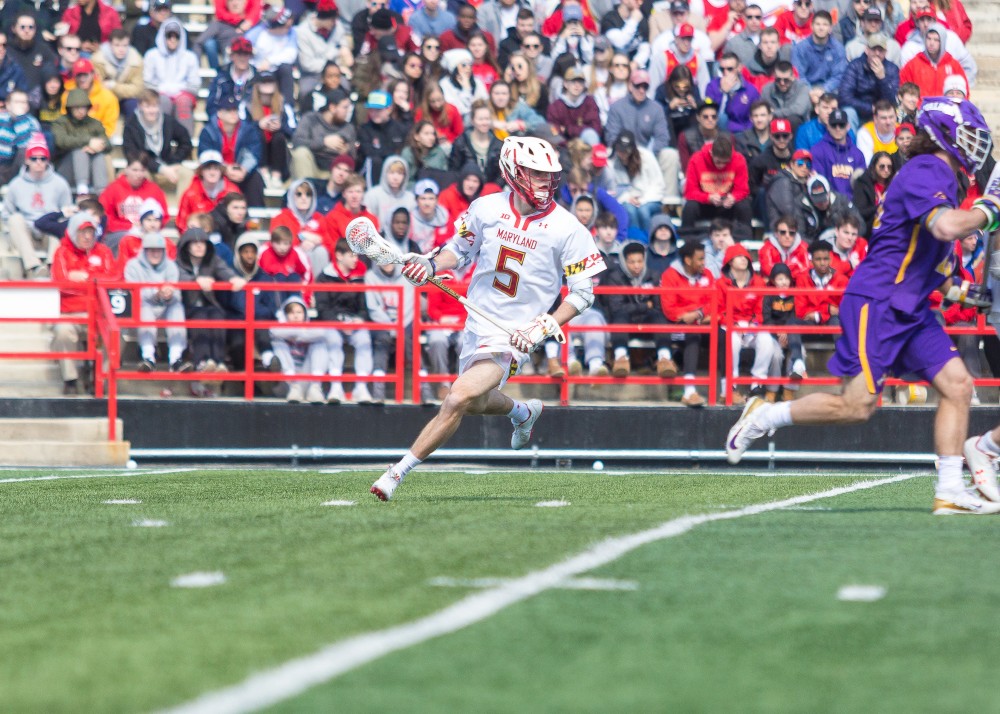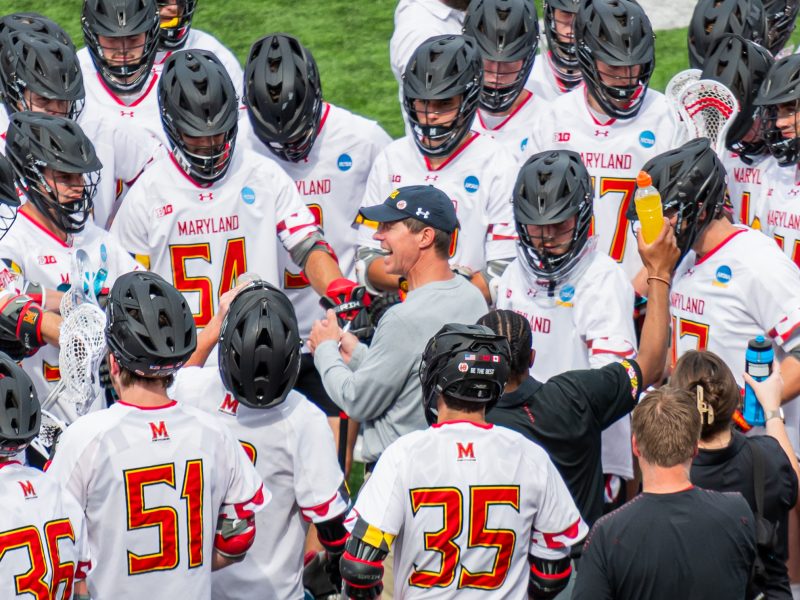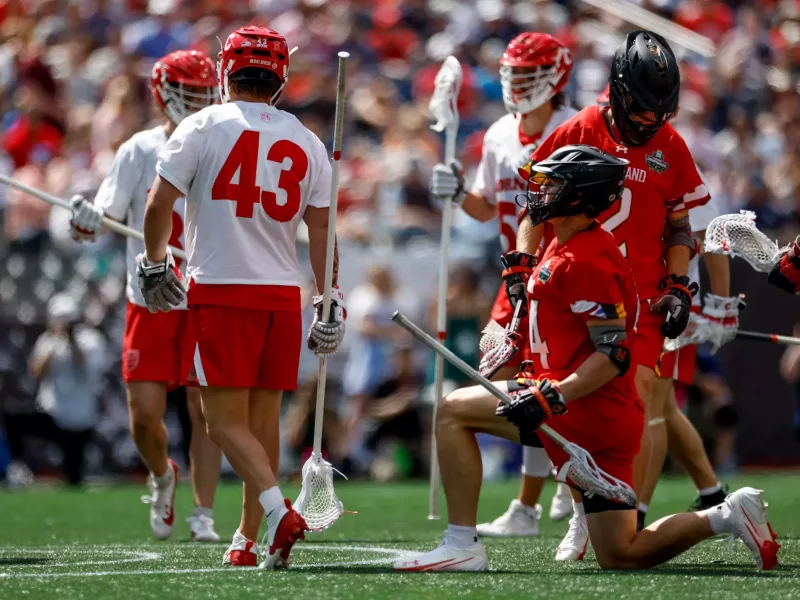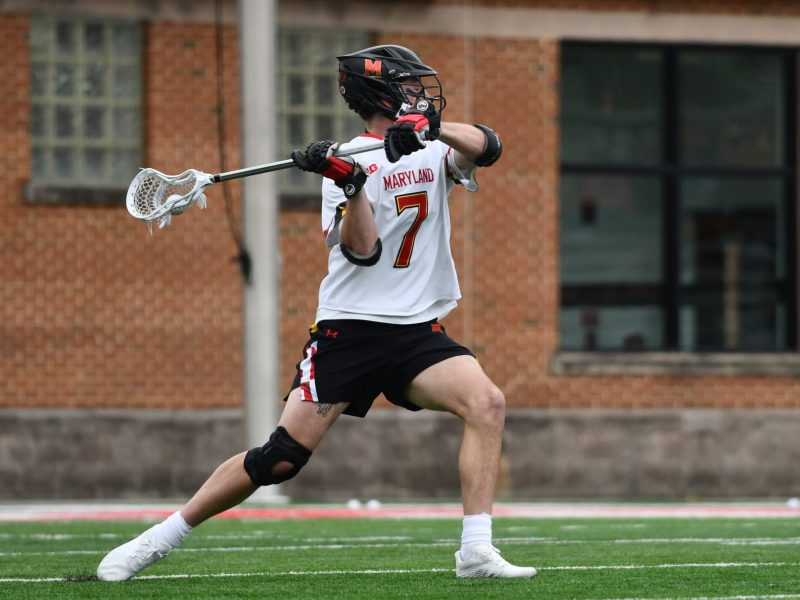The Thursday after Maryland men’s lacrosse won its first national championship since 1975, coach John Tillman flew to Northern California for his nephew’s graduation. Three days later, he flew to Southern California to evaluate players trying out for the Under Armour All-America game.
Tillman has taken notice of the growing number of recruits on the opposite coast. The Terps’ roster contains four West Coasters, including Utah native and highly touted midfielder Bubba Fairman.
The eighth-year coach has benefited from several Maryland alumni facilitating the sport’s growth on the west coast.
“Five or six days removed from the championship, I was trying to go see the best players from out west,” Tillman said. “It has enough attention for me to see what’s there. You’re seeing the growth of the game.”
***
In 2000, former Maryland men’s lacrosse attacker Scott Hochstadt moved to California. On his first day, the Columbia native wore Terps lacrosse shorts to the grocery store, and a woman approached him to talk about the sport.
Her son played club lacrosse, she explained, and there “aren’t any lacrosse guys in town.” She requested Hochstadt’s phone number and called him 30 minutes after their initial interaction.
“She said, ‘Listen, I have five kids in my backyard who just watched you play in the NCAA finals on ESPN,'” Hochstadt said. “‘I’ll give you $500 to shoot and play with them for a few hours.’ I thought, ‘I’m going to double my net worth right now.'”
Hochstadt had been drafted by the Buffalo Bandits of the Professional Lacrosse League in 2000, but he didn’t want to spend winters in upstate New York.
So, he drove to San Diego with $500 to his name, and shortly after arriving, realized his lacrosse pedigree made him a hot commodity in an area without an established history in the sport.
Every day, Hochstadt helped organize youth clinics. Then, he started a club team and hosted recruiting events for college coaches. Between 2000 and 2004, he also learned how to operate a business.
“For me, rich was having $5,000 in my pocket,” Hochstadt said. “I never looked back. I said, ‘I’m not going back to Maryland right now. There’s too much opportunity.'”
For eight years, Hochstadt orchestrated what he anticipates was the only recruiting event west of the Mississippi River.
Because coaches could have stayed east to recruit, Hochstadt paid the coaches double what they would earn recruiting on the other coast to evaluate California’s athletes. The strategy worked.
In 2004, Albany coach Scott Marr, Notre Dame coach Kevin Corrigan and Tillman, an assistant at Navy at the time, flew to Oakland, California, to attend one of Hochstadt’s showcases. Then, they drove two-and-a-half hours to Sonoma, California, to watch 60 West Coast kids who Hochstadt considered “not good, but athletic.”
“The sport’s growing like crazy,” Hochstadt said. “You’re going to see more and more western kids filling up rosters.”
In November 2004, Hochstadt took some of his top players to compete against East Coast club teams. Among them was Seattle native Drew Snider.
***
Snider had impressed Hochstadt enough that he called Terps coach Dave Cottle and called him “one of the best [midfielders] in the world.”
Hochstadt’s showcase was one of the first places Maryland evaluated Snider, who went on to earn NCAA All-Tournament team as a senior for the Terps before returning to Seattle after graduation.
He received coaching inquiries immediately. After starting as a coach at a local high school, parents approached him and said the siblings of players he coached were also interested in learning the sport.
So, Snider and Chris O’Dougherty, one of Snider’s teammates with the professional league’s Denver Outlaws, began offering individual lessons.
Lacrosse’s popularity in Washington began in Seattle, Snider said, but his organization helped expand it to the rest of the state.
The duo then founded CitySide Lacrosse, which organizes leagues and travel teams to take to the East Coast. Four years after its inception, the program has 4,000 kids, Snider said. Most of its events are sold out or close to it. Other youth programs in the area have wait lists.
“Lacrosse is getting out there and people are aware of the sport because there is NCAA lacrosse on ESPN,” Snider said. “It’s a combination of that and players like myself originally from the West Coast [who have] gone and played on the East Coast and come back home to start coaching.”
Despite lacrosse’s increased popularity in the region, field conditions challenge its growth, Snider said. With rain often in the forecast, cities try to push the group’s clinics and games to one of the few turf facilities in the area.
There are also few experienced lacrosse coaches in the West, Snider said. As a result, CitySide has partnered with local programs to run drills and clinics, providing insight to less experienced coaches, and hopes to give coaches access to resources on YouTube in the future.
Snider hopes the organization helps local kids stand out and reach the next level. In Seattle, kids are now less likely to get overlooked, Snider said.
“[College coaches] in the past looked at it as a waste or time or a risk and it’s a little expensive,” Snider said. “Now, that’s starting to change.”
***
Former Terps midfielder Jeremy Sieverts received an offer to be an assistant coach at Corona del Mar High School in Costa Mesa, California, in 2012. He thought it would be a three- or four-month commitment for a spring season, but spent four years at the school. Now a coach at Oaks Christian School outside Los Angeles, Sieverts has noticed the area’s talent improving.
The game’s growth has prompted kids to start playing in elementary school rather than picking it up later.
“I was really impressed with how far it had come,” Sieverts said. “You physically started to see lacrosse-type athletes. 6-foot-1, 170-, 185-pound players with some great stick skills.”
Sieverts said there has been an “explosion” in the number of prospective lacrosse players, but like in Seattle, the increase in demand for club teams hasn’t been met by coaches and referees.
In addition to working at Oaks Christian, Sieverts and former Terps defenseman Max Schmidt organize camps in Los Angeles, Las Vegas and Denver. Each emphasizes the game’s fundamentals, which Sieverts said can be challenging to teach. He’s had to learn how to explain catching a pass or scooping a ground ball, skills he doesn’t recall learning himself.
When it comes time to help a high school player find a potential collegiate opportunity, Sieverts tells his athletes to “own their own college search.” With the sport’s growth on the West Coast and increasing connections to coaches on the East, there are numerous opportunities to find a landing spot.
Sieverts grew up attending several Maryland, Towson, Loyola and Johns Hopkins lacrosse games every Saturday. West Coast athletes don’t have the big-name programs Sieverts had the benefit of watching, but with events like the Pacific Coast Shootout and alumni like Hochstadt, Snider and Sieverts helping increase popularity, that might change in the future.
“One drawback is on a regular basis, young players don’t get to see high-level lacrosse,” Sieverts said. “Out west, it’s sort of in its infancy still. That’s something that will change for the better the next couple of years. The players on the West Coast will be able to stay closer to home.”



